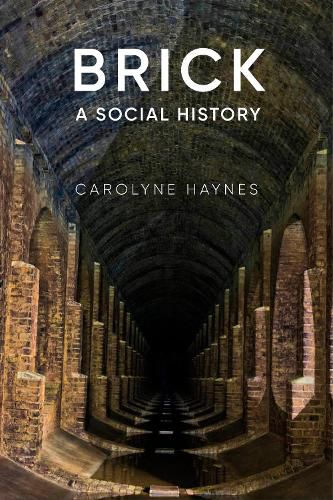Readings Newsletter
Become a Readings Member to make your shopping experience even easier.
Sign in or sign up for free!
You’re not far away from qualifying for FREE standard shipping within Australia
You’ve qualified for FREE standard shipping within Australia
The cart is loading…






Bricks and lime mortars came to this country with the Romans but for most people bricks become popular a little later. After the Great Fire of London, whole buildings had to be built from non-flammable materials and brick buildings came into their own. The Georgian town house became the epitome of urban design; bricks and mortar built the infrastructure of industrial Britain. Mortars had to be created that could set under water for canals and be strong enough to build long railway tunnels, whilst bricks had to be made in huge quantities. They also built the worst slums this country has ever known, contributing to the early deaths of thousands. The love affair with bricks continues today, with exposed brickwork on show in many modern buildings. This is the surprising social history of bricks in Britain. AUTHOR: Carolyne Haynes is an architect by training. She was project manager of the Heritage Lottery grants for Buriton Chalk Pits
an old lime working
and Bursledon Brickworks, the only remaining Victorian steam driven brickworks left in the country. Now a project manager at The Brickworks Museum, she lives in Southampton.
30 colour and 80 b/w illustrations
$9.00 standard shipping within Australia
FREE standard shipping within Australia for orders over $100.00
Express & International shipping calculated at checkout
Bricks and lime mortars came to this country with the Romans but for most people bricks become popular a little later. After the Great Fire of London, whole buildings had to be built from non-flammable materials and brick buildings came into their own. The Georgian town house became the epitome of urban design; bricks and mortar built the infrastructure of industrial Britain. Mortars had to be created that could set under water for canals and be strong enough to build long railway tunnels, whilst bricks had to be made in huge quantities. They also built the worst slums this country has ever known, contributing to the early deaths of thousands. The love affair with bricks continues today, with exposed brickwork on show in many modern buildings. This is the surprising social history of bricks in Britain. AUTHOR: Carolyne Haynes is an architect by training. She was project manager of the Heritage Lottery grants for Buriton Chalk Pits
an old lime working
and Bursledon Brickworks, the only remaining Victorian steam driven brickworks left in the country. Now a project manager at The Brickworks Museum, she lives in Southampton.
30 colour and 80 b/w illustrations